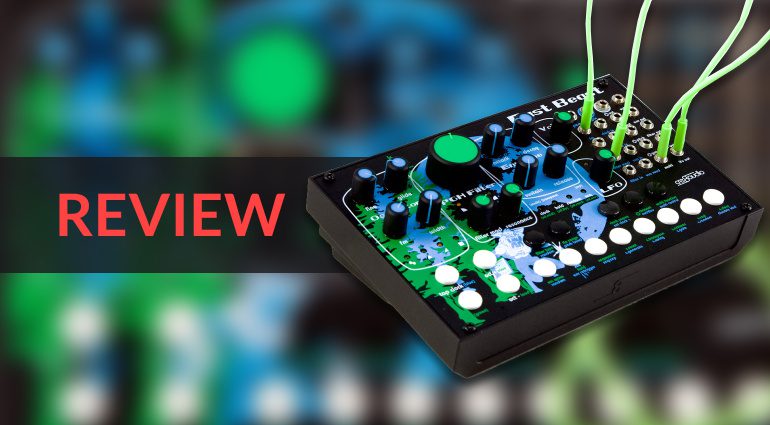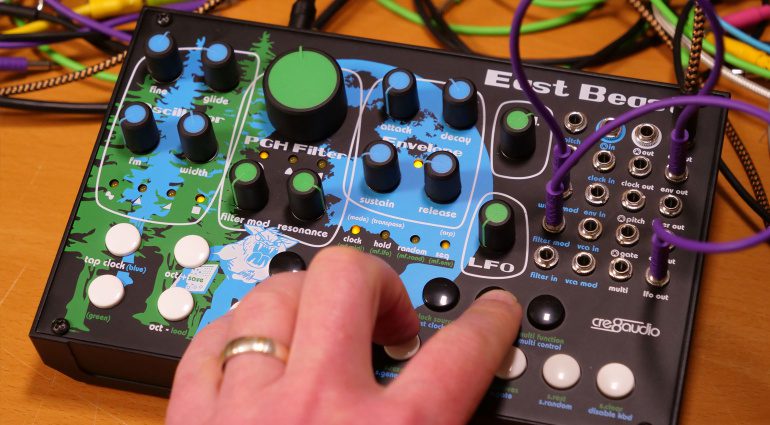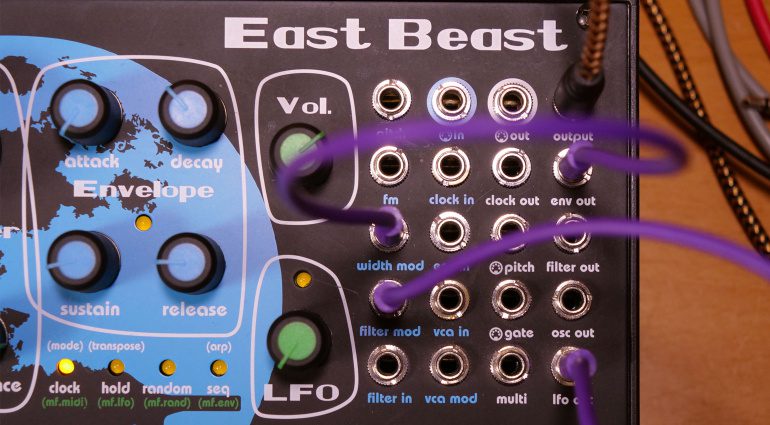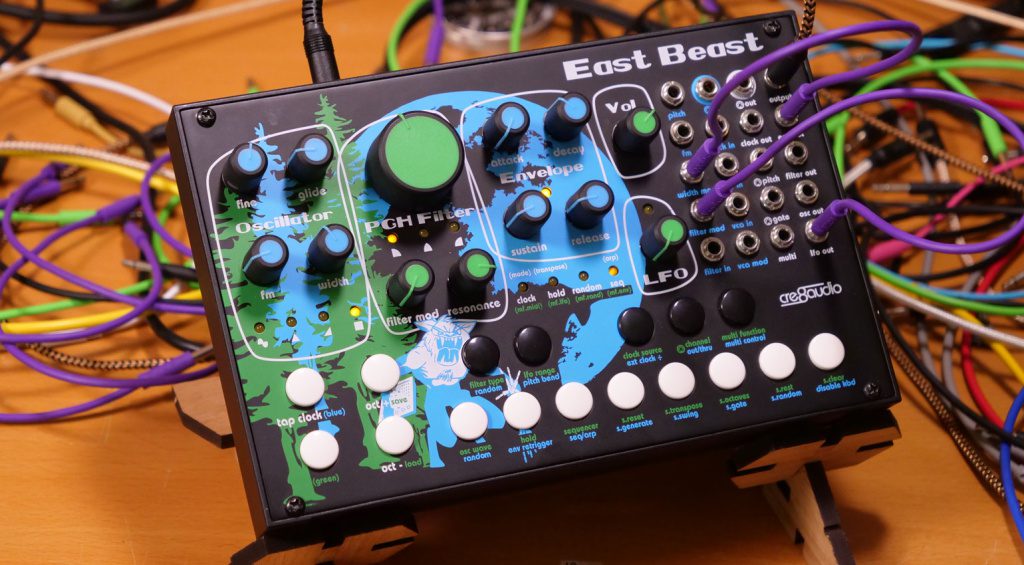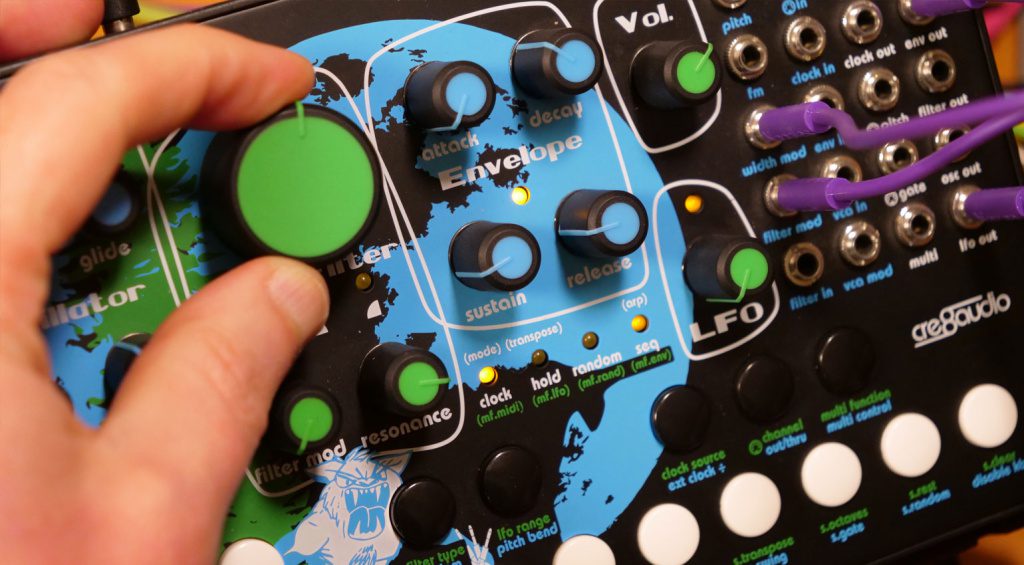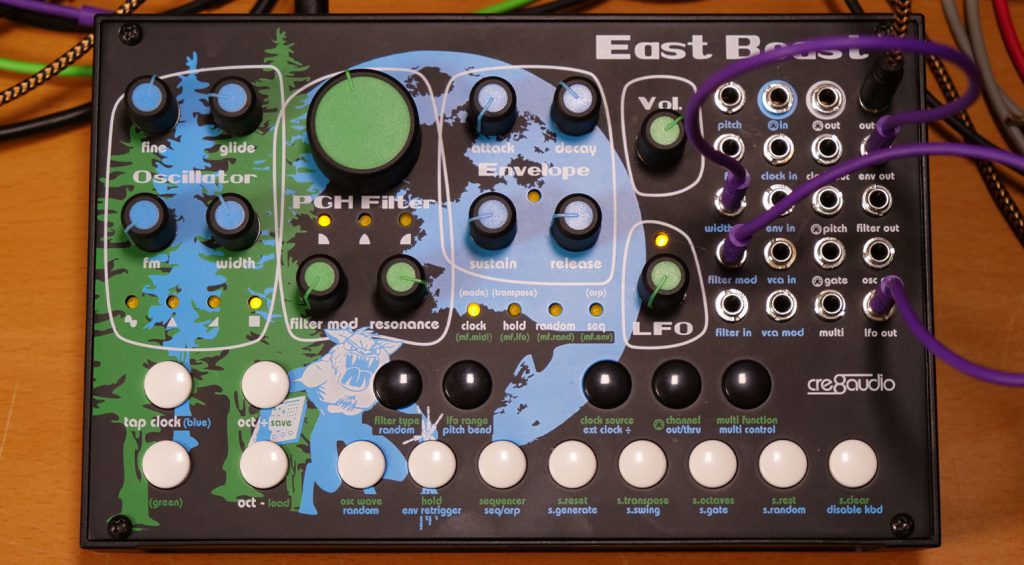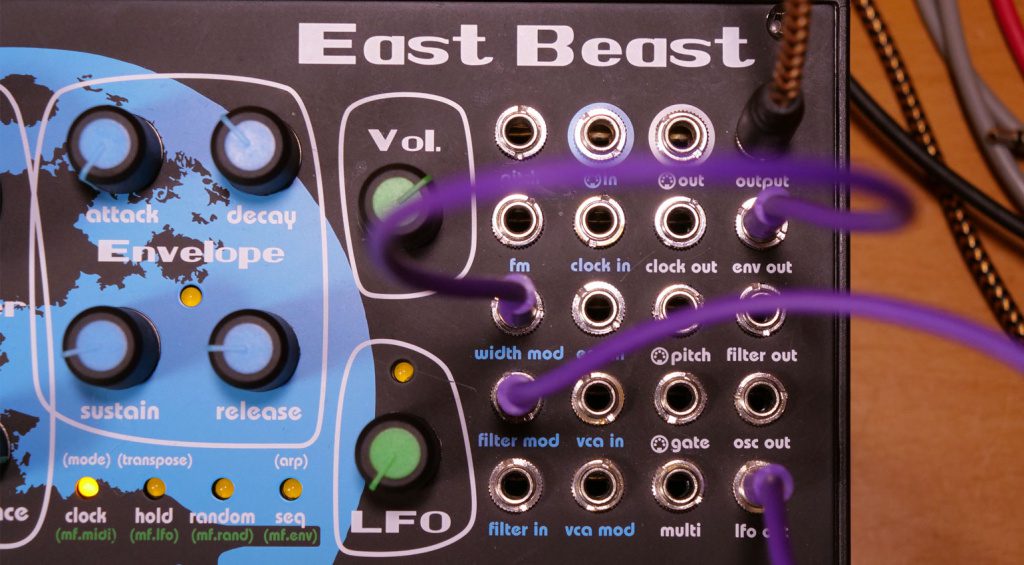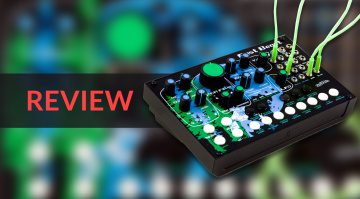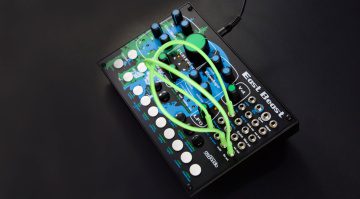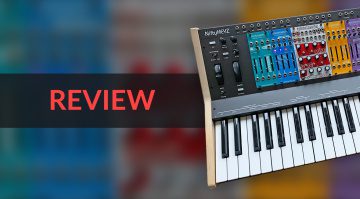REVIEW :Cre8audio East Beast semi-modular synthesizer
We got our hands on the only Cre8audio East Beast synthesizer in existence before release. And here’s my full, exclusive review and demo video.
Cre8audio East Beast
East Beast is more than a collaboration with Richard Nicol; this synthesizer draws on the whole Pittsburgh Modular team, or at least Richard’s partner in synth development Michael Johnsen. They describe how East Beast is an evolution of the Pittsburgh SV-1 modular synthesizer. It’s got a proven and developed oscillator for rich tones and a buttery smooth state variable filter that has formed the signature sound of Pittsburgh Modular.
In total there are six modules behind the one faceplate. Along with the VCO and VCF, there’s an ADSR envelope, a simple VCA, LFO and a feature-packed MIDI controller. Being semi-modular, it is all pre-patched internally to give you a regular subtractive synth voice, and then over on the right, there’s a patch bay where you can go to town on your rewiring to find your own sounds.
Synth sections
The oscillator features four waveforms which are selectable individually or as combinations. So you can put the sine with the square or triangle with the ramp and play with a mix of different tones. If you select all the waveforms, East Beast produces a weird and interesting pitched noise with a distant sine wave lost beneath it somewhere. It’s great for percussive sounds and windy sweeps. There are controls for Glide, Pulse Width Modulation and FM. The FM input is linear and wired to the LFO. It’s great for a bit of vibrato, and although the LFO can get up to audio rate speeds, it never gets very crazy.
Moving to the filter section, we find a multi-mode 12 dB/Oct filter designed to have no dead spots. Even with the resonance pumped up, you get a stable, sweet tone all around the dial. There’s no drop, no squealing; it’s as smooth as anything. You can select high, low or bandpass or combinations to give you a wider range of ideas.
For modulation, you have a regular ADSR envelope and a simple triangle wave LFO. The envelope is tied to both the VCA and the filter, which is very efficient but also a bit restrictive. The filter has a modulation depth control which controls the amount of envelope sent to the cutoff. It can carve out good long, evolving tones and all the way down through acid basslines to super-snappy percussive clicks and noises. The LFO has two options for a wider range, from meandering all the way up to audio rate. As we’ll see, far more modulation can be brought into the mix from the digital multi-engine, but as a starting point you have everything you need for a fun time of synthesizing.
East Beast is superbly solid as a synth voice. The filter is really quite remarkable and spreads its butteriness all over the thick toast of analogue waveforms. I was expecting something crude, beastly, brutal, and overdriven when East Beast is smooth, mellow, and organic. You’re not going to scare small children or old people with your tunes. If you met the Beast in the woods, you are more likely to want to take them home for a nice cup of tea.
Unexpected Edges
However, Cre8audio East Beast has an unexpected edge in the shape of the MIDI controller and hidden digital modulation engine. Every button on the tappy keyboard has at least two other functions. As there’s no display, some of the more interesting functions use a row of lights in a weird 4-bit dance of indication. I’m immediately reminded of the Mother-32s auxillary output that’s has multiple functions which are buried deep inside multiple button presses. Or the mod section of the Dreadbox Dystopia and deeper functions of the Nymphes. These sorts of brain-teasing analogue menu systems are terribly helpful and entirely workable. Still, they tend to send you off scurrying for the manual as you can’t figure out why the thing you’re trying to turn off is still on despite lots of button mashing.
But first, the keyboard. It’s a tappy, clacky octave of velocity and pressure-free buttons that’s actually a MIDI controller with CV and Gate outputs. So you can use the MIDI Out and play other synths or take the CV/Gate out to control other bits of Eurorack. I should mention that the whole East Beast can be popped out of its case and dropped into Euroack. That makes it one useful little keyboard to have knocking around.
You hold the corresponding Green or Blue button on the left and tap the button to access the coloured function for most of the button controls. It would have been awesome if the Green and Blue buttons were actually green and blue. Instead, they are white with the colour name in brackets underneath as if it’s an ironic suggestion or afterthought. Through this colour-coded system, you can do helpful things like change the filter type and oscillator waveform and increase the range of the LFO and pitch-bend.
Weird ideas
They could have left it at that, but Cre8audio wanted to push it with some wonderfully weird ideas. Firstly we have the randomisation of the waveforms. Hit Blue + C, and suddenly you get a randomised waveform on every note. It changes your lazy bassline into a perky series of leaping waveforms or gives your more extended notes a sense of change and mystery. It’s fabulously fun and quite unexpected just when you thought you had the measure of this machine. They did it to the filter as well. Hitting Blue + C# sends the filter off into the same cycle of spasms. It is totally brilliant and definitely a stand-out feature.
Sequencer/Arpeggiator
Secondly, we have the sequencer and arpeggiator. I’m never entirely sure which mode I’m in when trying to access either but hitting Green + E will definitely get you started and you fiddle about from there until it does what you think you want. Note that the manual is well written, fully illustrated, and explains exactly how you access everything in great detail. The arpeggiator is pretty simple, just hold down some notes it will play them in a loop. There don’t appear to be any additional modes or directions for the Arp, it just follows the notes you’re holding in the order you played them.
The sequencer is unusual in that it just starts looping and then incorporates any additional notes you play. You can clear the pattern and press a note, and it will loop that note until you add another and up to 32 steps in total. You can save your patterns for later in one of the 13 slots.
The sequencer and arpeggiator also benefit from some additional messing about. You can transpose, add some Swing, change the Gate length and make it playback the notes in a random order. But it will also generate new sequences via the magic of the Blue + F. Just hit it, and weird things will happen to your sequence.
You are currently viewing a placeholder content from YouTube. To access the actual content, click the button below. Please note that doing so will share data with third-party providers.
East Beast Multi-Function
Finally, we have the Multi-Function Modulation Generator, which dramatically expands on the modulation engine of the East Beast. It has a single patch output in the patch bay and you use it to patch into any of the available inputs. There are four modes. First, you get a CC MIDI control option which converts any MIDI CC# or mod wheel input from a MIDI controller into CV. Second, you get a clock synced LFO with lots of division and multiply options, and thirdly there’s a clocked random output with the same options. Lastly, you get a simple decay envelope with several decay lengths. This is the badly needed second envelope that you can patch into the filter to control it differently from the VCA.
Cre8audio East Beast Conclusion
In use, the East Beast is a real softy. It behaves impeccably, offering up smooth, musical sounds that are fun and easy to achieve. The digital aspect brings in a lot of spiciness, making this more than just another monosynth. I love how it messes with the waveforms and filter modes, I appreciate the second envelope and can play with the sequencer all day long. The patch bay offers a lot of variation and potential in a more extensive system. Dropped into your Eurorack with the keyboard and MIDI-to-CV functionality, it could be useful in many different ways.
If you’re considering getting into synths for the first time then the East Beast is a brilliant introduction to synthesis, patching and playing with sound. However, just because you’re a seasoned professional doesn’t mean you should pass this by. I would say that the sound of that oscillator and filter together are so sweet that anyone with ears would enjoy spending time in the warm embrace of the East Beast.
You are currently viewing a placeholder content from YouTube. To access the actual content, click the button below. Please note that doing so will share data with third-party providers.
East Beast Availability
It should be available by the end of May for a not unreasonable price of around £215 (just updated).
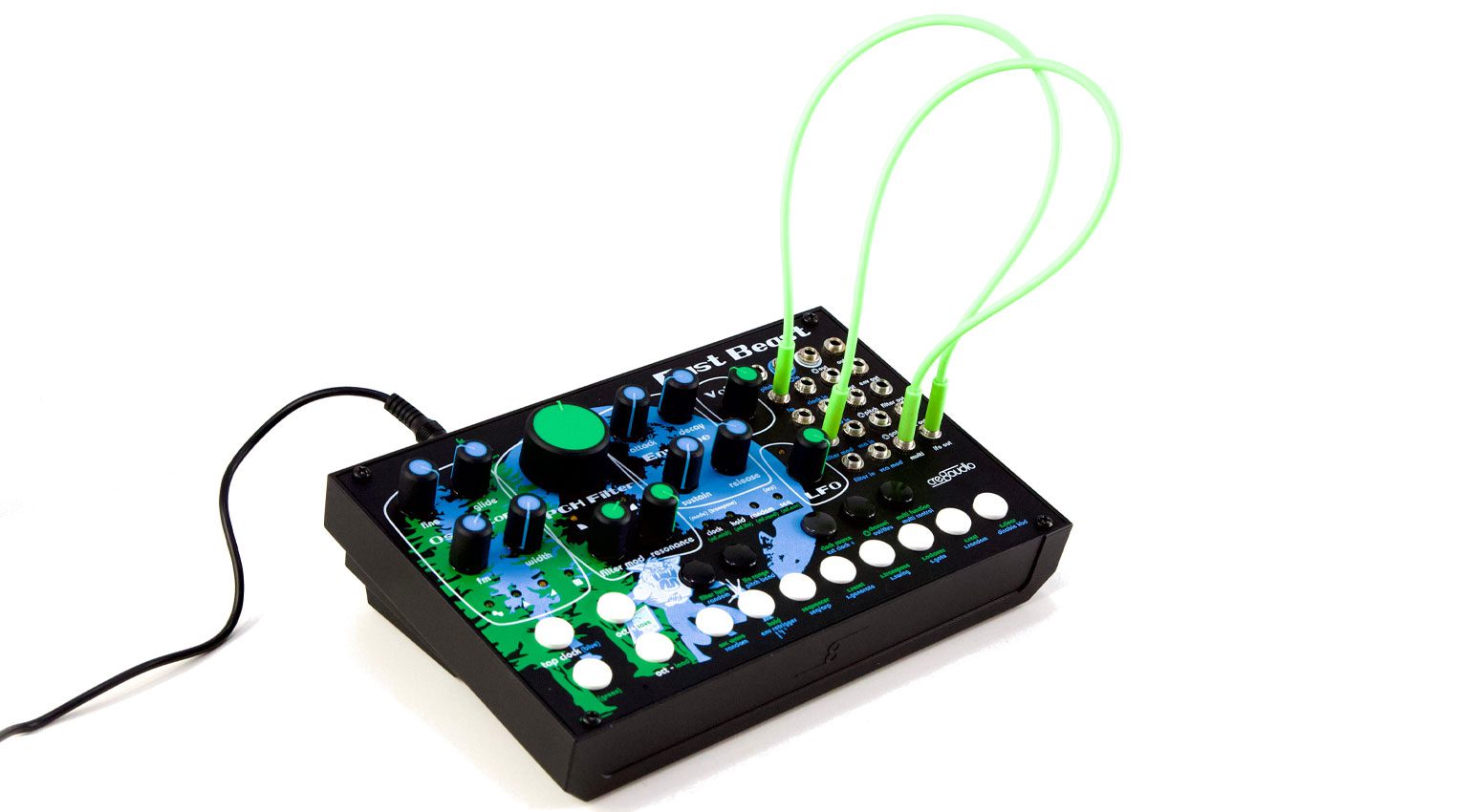
 5,0 / 5,0 |
5,0 / 5,0 | 